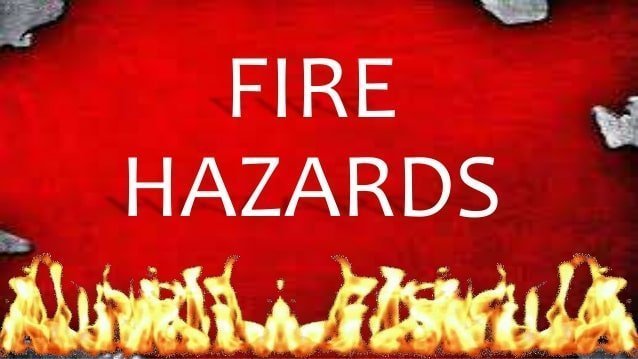Table of Contents
Fire hazard in buildings can be defined as the potential of accidental or intentional fire to threaten life, structural, and property safety in a building.
Around 50 k deaths are reported yearly worldwide due to firing in buildings.
1. Fire Hazard in Buildings in the USA
The National Fire Protection Association (NFPA) estimates that in the United States:
a. A fire department responds to a fire every 23 seconds
b. One home structure fire was reported every 89 seconds
c. One home fire-related injury occurs every 46 minutes
d. One home fire-related death occurs every three hours
In 2020, 1,388,500 fires resulted in 3,500 civilian deaths and 15,200 injuries
Each year, an estimated 368,500 residential building fires were reported to fire departments within the United States from 2017 to 2019. These fires caused an estimated 2,770 deaths, 11,650 injuries, and $8.1 billion in property loss.
{ Source of data: NSC Injury Facts Organization }
From the above data, we can see that rate of fire hazards in buildings is increasing drastically.
2. Fire Hazard in Buildings in India
Every year in India, about 10,000 + people die due to fire and related causes. Although the rate decreased by 50 % in the past 8 years, 10,000+ deaths are very high.
Among these deaths, around 70 % of deaths are due to fire hazards in buildings.

Fire not only leads to the loss of lives and properties but also to the failure of concrete.
Subjecting concrete to high temperatures causes the spalling of concrete. Effects of temperature on concrete are:
100 deg. C = No effect or negligible loss of efficiency
200 – 250 deg.C = 25% Loss of efficiency
500 – 600 deg. C = Completely loss of efficiency
3. Causes of Fire Hazard in Buildings
Some causes of fire hazards in buildings are:
1. Combustion of combustible material
2. Due to underground electric table
3. Building fire from bone fire
4. Electric short circuit
5. Due to electric appliances like heating of air condensing, electric heaters, etc
6. Storage of combustible chemical and flammable liquid
7. Due to lightning
8. Due to smoking
3. Effects of Fire Hazard in Buildings
Some of the effects of fire hazards in buildings are:
1. Production and release of toxic gases
2. Destruction of water supply and electric supply system
3. Combustion and damage of timber structure and flammable material in a building like furniture, roof, paper, clothes, etc.
4. Injury to humans and animals
5. Loss of essential properties, documents, foods, or lives
6. Environmental pollution and increase in global temperature
4. Remedial Measures of Fire Hazard in Buildings
Some remedial measures for fire hazards in buildings are:
1. Collecting waste paper in a tight-fitting metal container
2. Store important paper in a fire-resistant safe cage
3. Do not store electric appliances near the electric circuit
4. Do not store flammable liquid for a chemical; if unavoidable, keep it in a safe cage only
5. Install fire safety measures on a building to reduce fire risk
6. Treat the combustible material with a fire retardant chemical to reduce the chance of ignition
7. Prevent smoky area
8. Install a proper fire alarm system
9. Public awareness
This way, there may be many more causes, effects, and remedial measures for fire hazards.
| Read Also: Spalling of Concrete |

